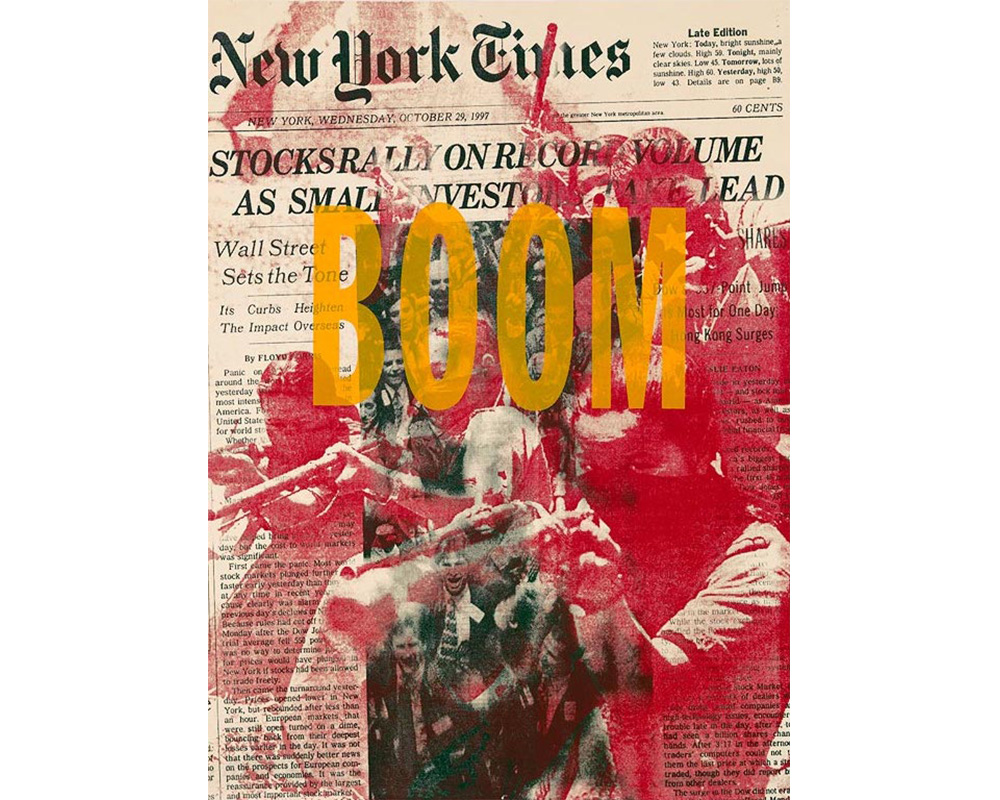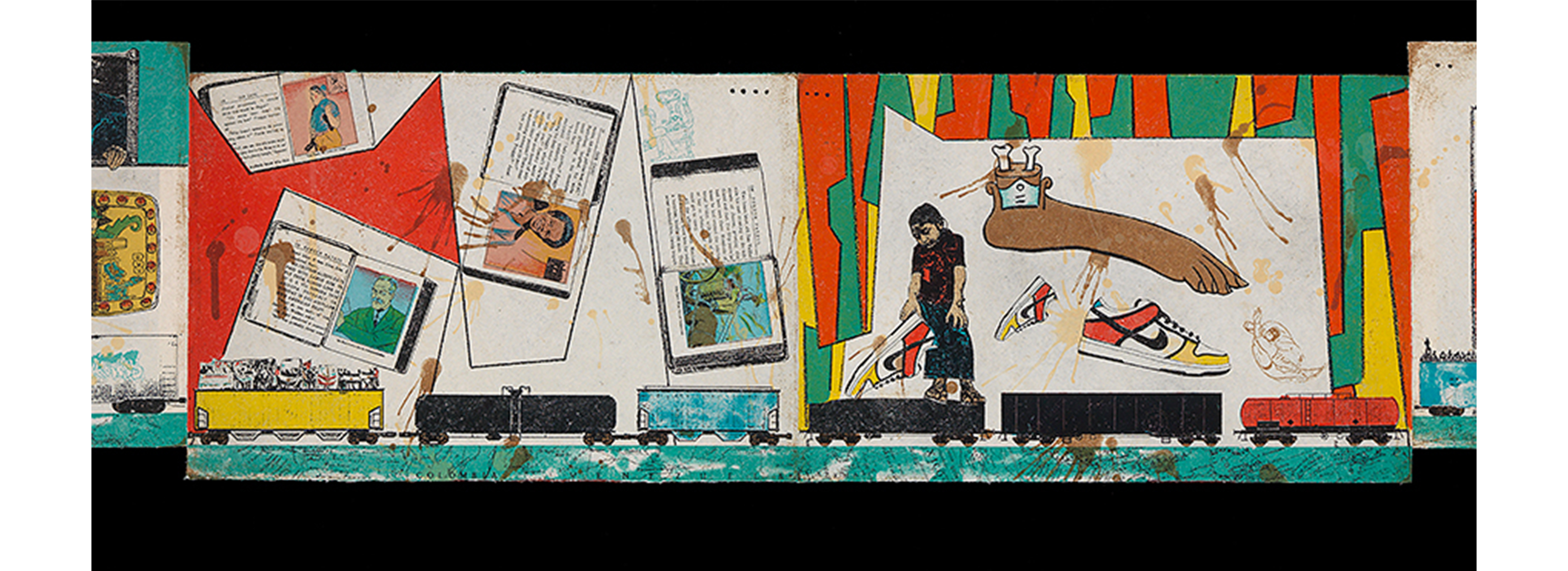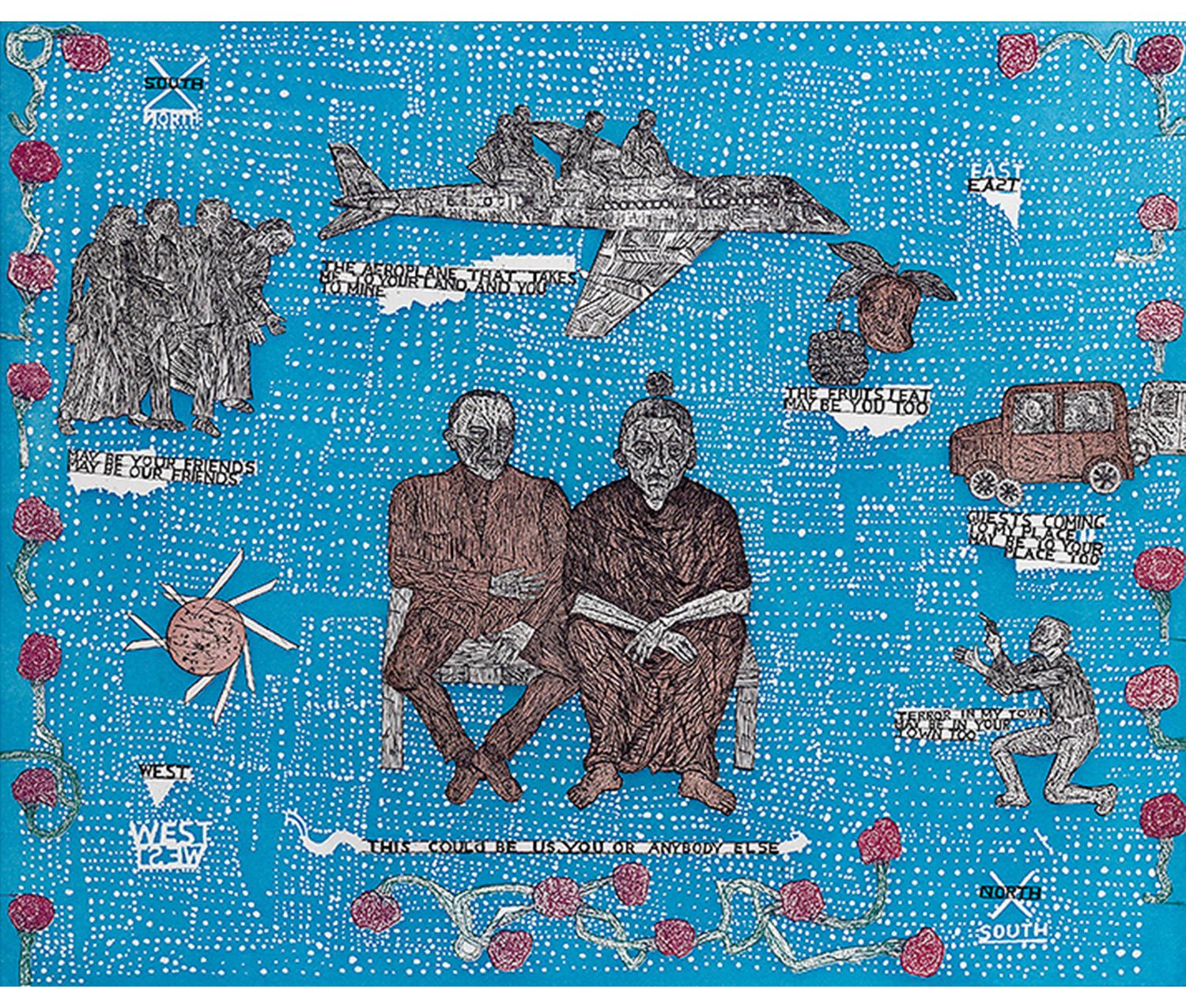
Flickers and Blinks: Confronting the Weight of Movement
Yasmine Vera '20 is the curator of the Student Picks show "Flickers and Blinks: Confronting the Weight of Movement."
Creating this collection was a form of empowerment. Not only because I was given the opportunity to create something and share it with others in a unique and truly special way, but because in hand with this came my new ability to explore the Museum. This was not new because I couldn't do it before, but because I didn't know that I could. Going into this process I was curious about everything - what the Museum had in its collections, what I could make of them, and what the final product would look like. And as I went through the Cunningham Center's collections with a goal of centering people of color and their experiences in the curation, I realized there was so much to offer. I just had to know to look for it.

Chagoya, Enrique. American born Mexico, b. 1953. La Bestia's Guide to the Birth of the Cool, 2014. Ten color lithograph with chine colle and gold metallic powder on handmade Amate paper, accordion book format. Purchased with the Elizabeth Halsey Dock, class of 1933, Fund. SC 2015.1.
The full-circle moment of this collection was its presentation. Nothing is more empowering than sharing one's creative endeavors with others and receiving clarity in return. I had spent so much time with these pieces, with this collection, that I had forgotten the first impressions which drew me to them and led me to create this larger theme. Ausencias felt like a trans-national phantom; all the empty chairs left over after a big family reunion in the home country. La Bestia was an unsanitized lesson on a history that was never preoccupied with being clean until it decided who was dirty. The art took us through violence and fear, memory and fantasy, isolation and belonging, all tied through with a sense of contemplation.
The central piece of this collection - This Could Be Us, You or Anybody Else by Arpita Singh - summarizes this journey. The white dots peppering the image mirror constellations or even regional or national boundaries, satellite-view. These dots create a sense of connection, of a larger pointillism-style picture just out of sight. They map through several frozen scenarios which, read clockwise, tell a story of migration of people and food. The work calls to mind the detailing, vibrancy, and panoramic narrative style common in Bengali folk paintings. In the bottom right we are reminded that even fear and cruelty can move, regardless of borders, and is unique to no one person. Though the cardinal directions are written, only North and South are made to mirror each other. East and West are alone, with West duplicated above itself.

Singh, Arpita. Indian, b. 1947. This Could Be Us, You, or Anybody Else, 2007. Etching and aquatint printed in color on heavyweight, slightly textured, white paper. Gift of Bridget Moore, class of 1979. SC 2014.27.1.
At first glance this piece may seem to lapse into a kind of romanticism: the bright blue and white in the background, and the rose-vine borders work alongside the universalizing language to accomplish this. Yet they are offset by these grim grey scenes, etched out in jagged lines, figures drawn hunched or stiffly positioned and with either desperate or stoic expressions. The art is not devoid of humor or commentary, either - at the top, figures literally ride on top of an airplane. Singh does not tell the viewer that “this could be you” in an attempt to compare experiences, but instead to relate them. The worlds that we live in, populated as they are by movement, food, community, and even tension, are neither so opposite or equal as we would like to think. Singh herself is a product of a kind of movement, as new borders developed between India, Pakistan, and Bangladesh during her lifetime. She has a more acute recognition of how quickly one can be marked “other” or “outside” because of the multiple identities she carries. As a result of this, her words take on a new kind of meaning. There is the request for empathy - “this could be you” - but also a kind of ambivalence - “may be your friends/may be our friends” - and even a staking of claim - “guests coming to my place/may be to your place too”. The attitudes expressed under each scene highlight the varied responses to movement and the identity work that it requires. Ultimately there is a sense that even while Singh invites the viewer to relate, she is also reminding them of her place and agency. Her history and humanity.
Our movement merits contemplation. Begs it as a sign of warning or even impulse. Reading the viewers' responses I saw this again, and I saw it anew. Even while moving we are always in a position to heal, love, and acknowledge. Remembering this, especially as a product of the diaspora, carrier of colonial freight, as a person of color, is not only empowering - it is redemptive.